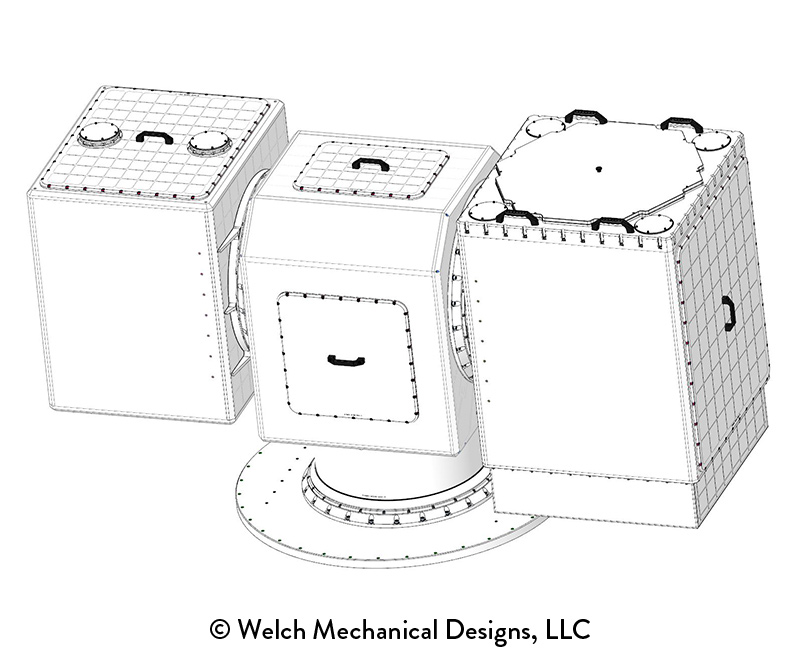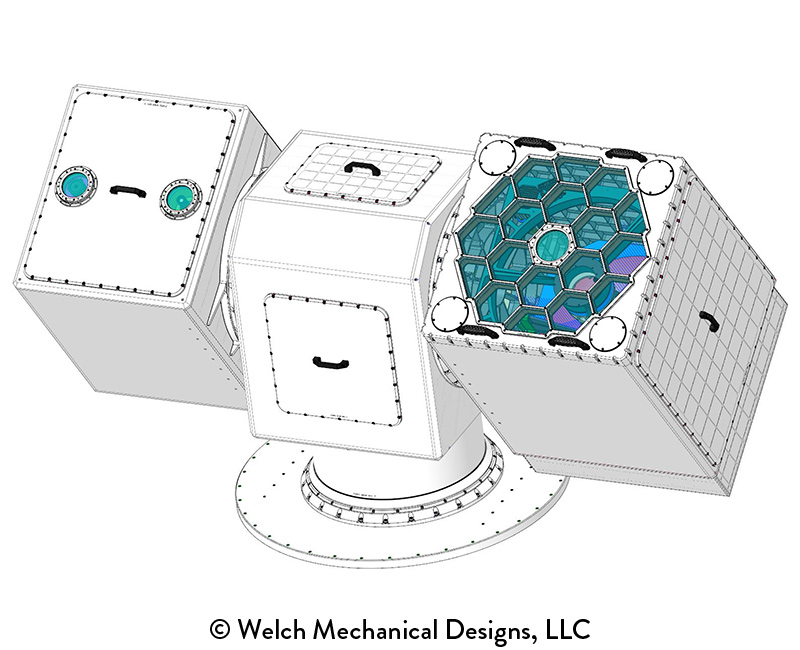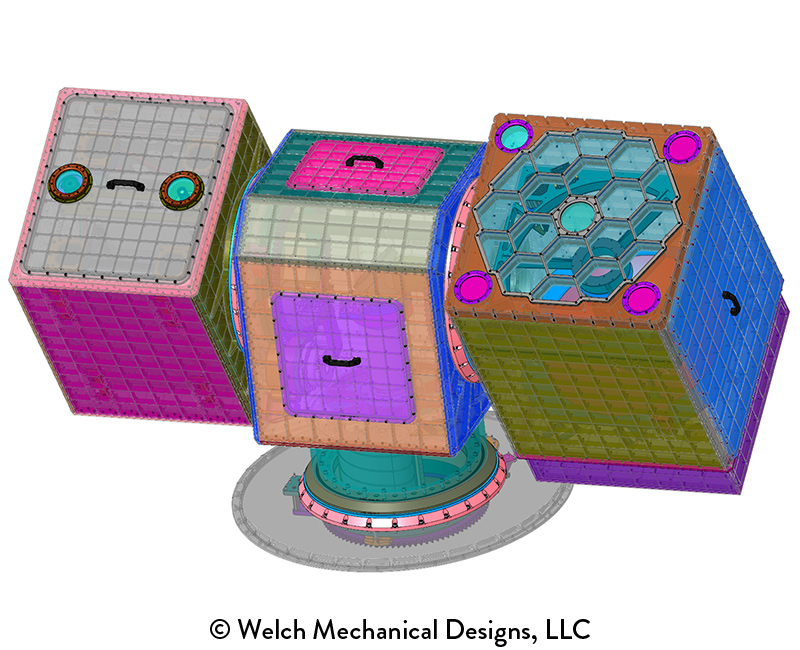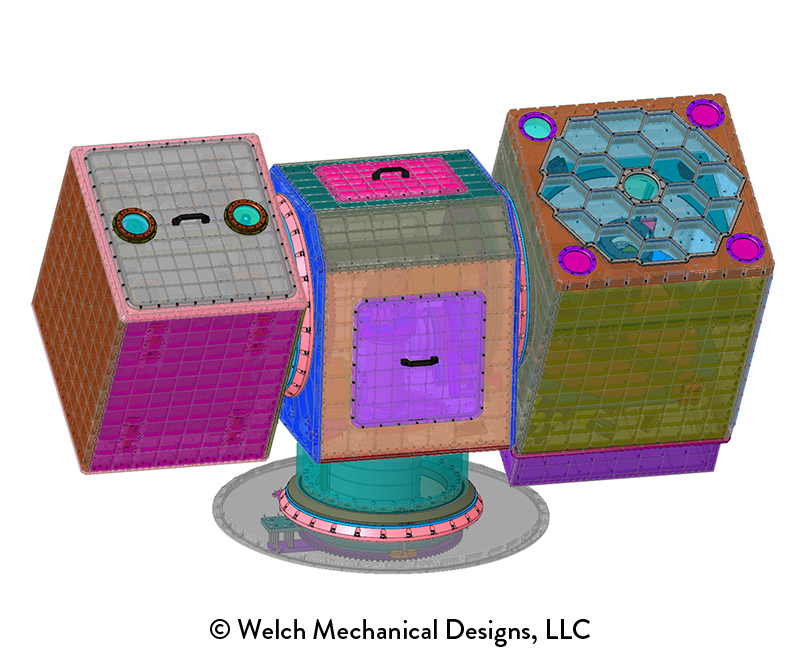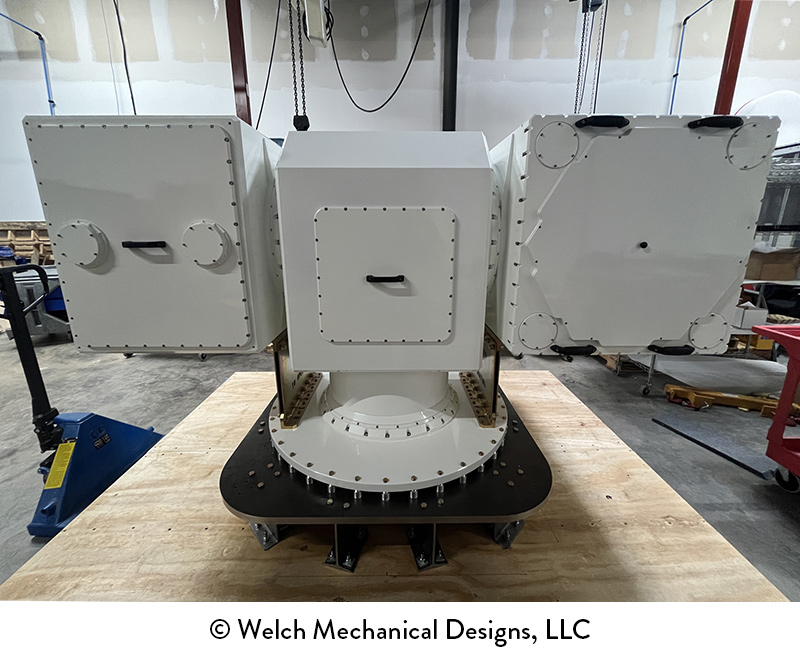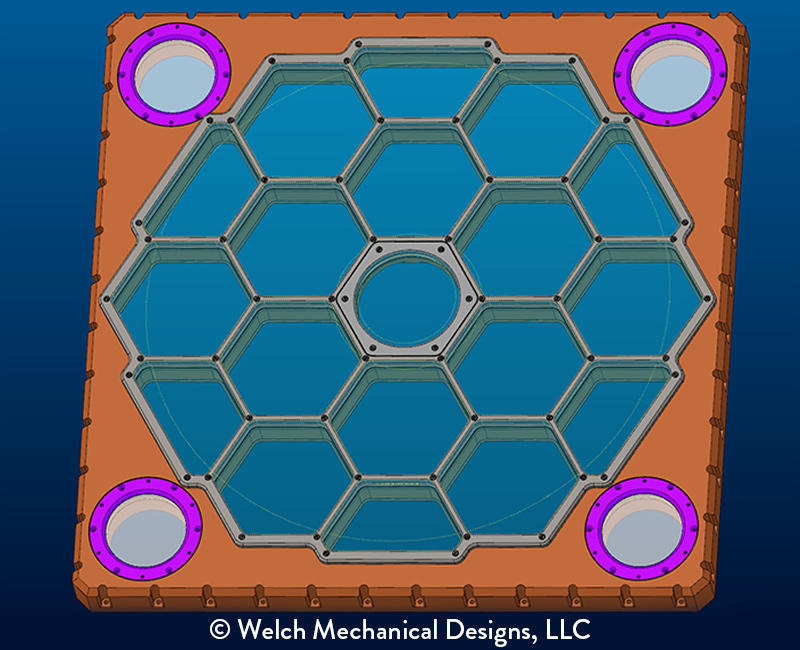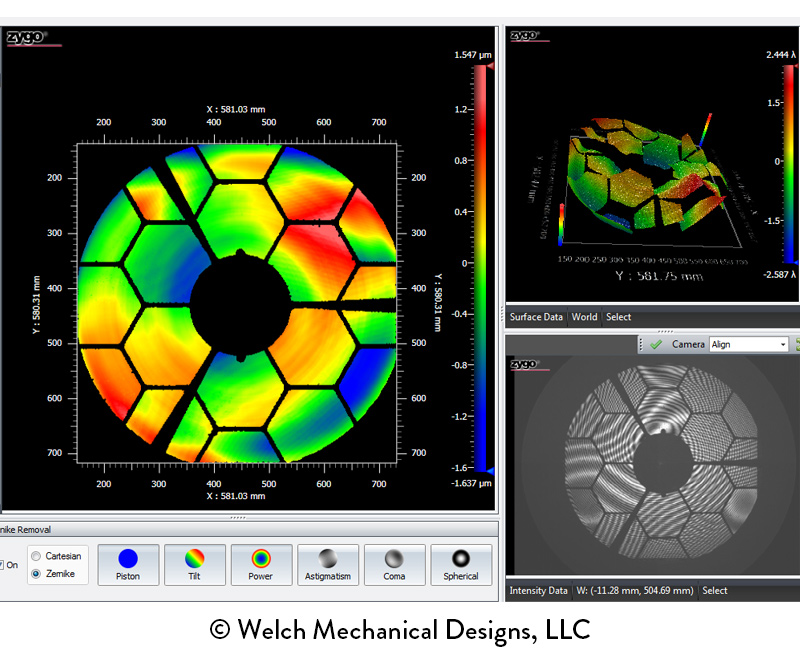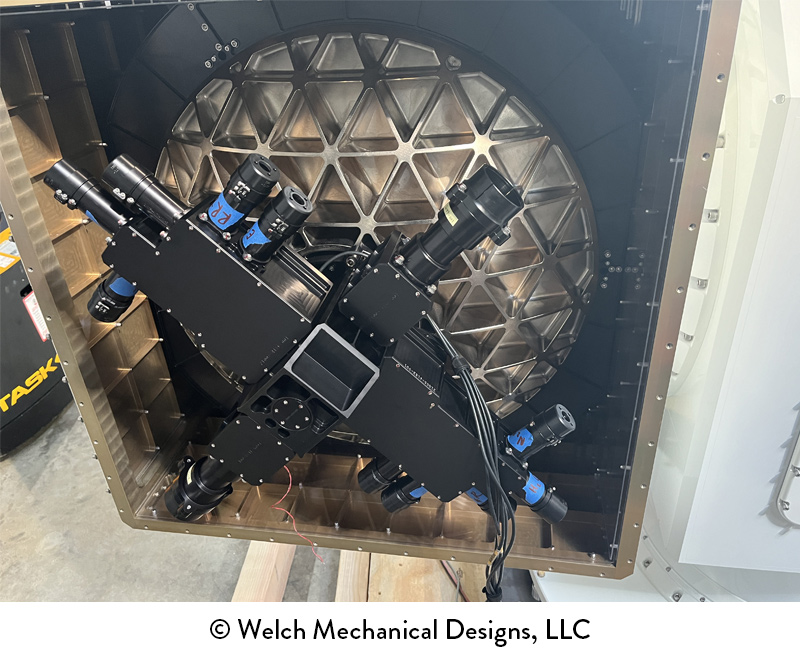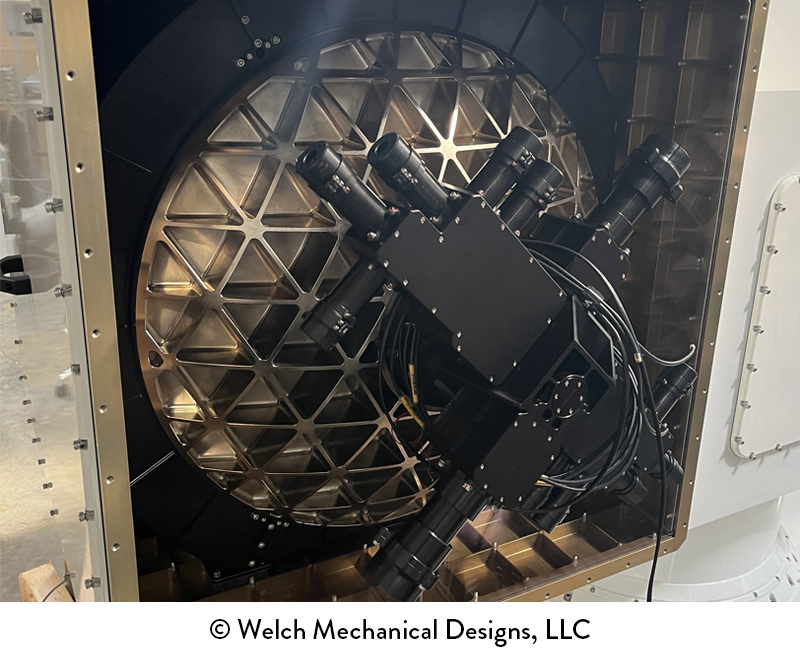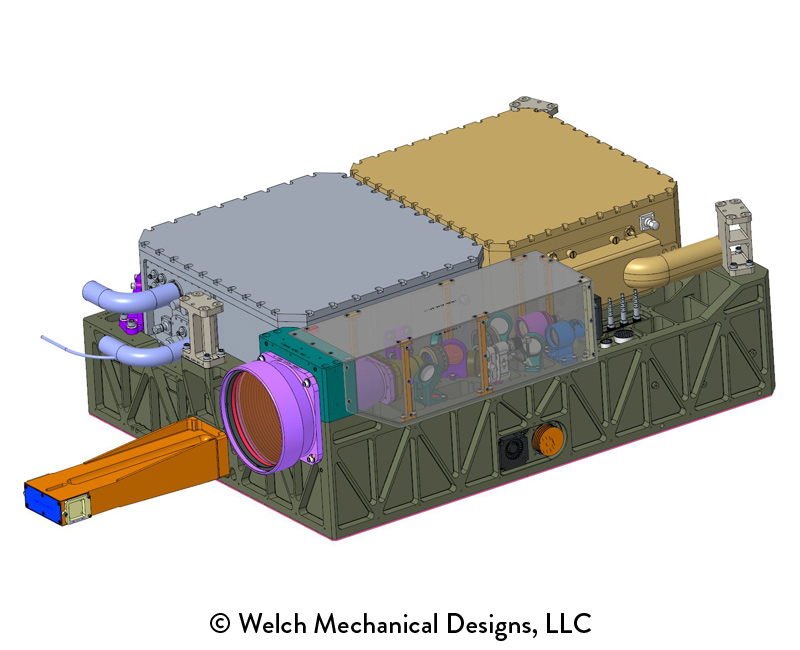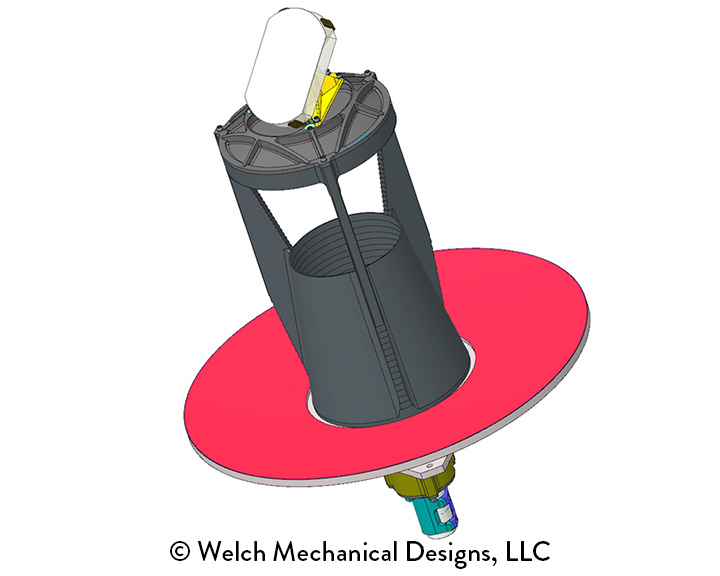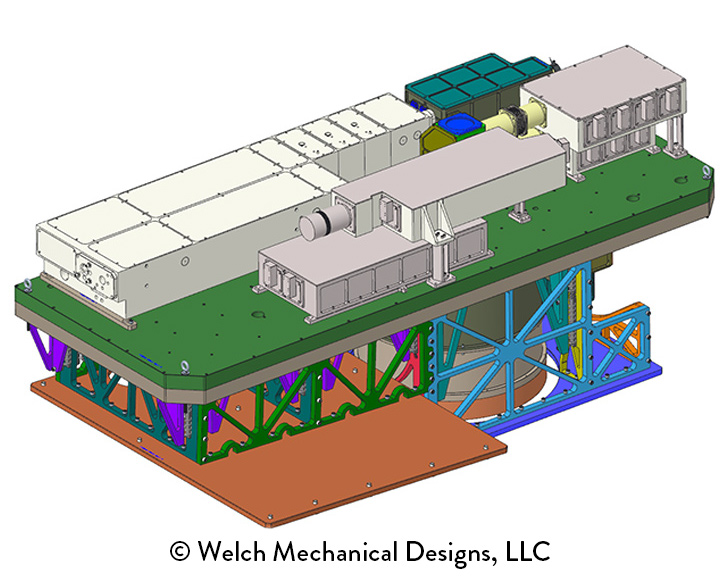High Altitude Characterization System (HACS) LiDAR
High Altitude Characterization System (HACS) LiDAR
The High Altitude Characterization System (HACS) LiDAR instrument consists of a single 60cm F/3 telescope with multiple optical detector channels. The design accommodates a single WMD 12U lightweight electronics rack synchronized to move with the transceiver. This allows the shortest possible cable length and minimizes introducing noise via the sensor cables.
The positioning system is designed using three motor assemblies to point the telescope and enclosure in elevation and azimuth. Elevation range is 100 degrees and azimuth is 270 degrees. We achieved an average bi-directional pointing error standard deviation of 50 μrad for this system.
During development, WMD performed extensive accuracy and repeatability testing of the motor assemblies under axial and moment loading to fine tune our custom design. Our unique ability to perform testing, make design changes, and work with our machinists in house enables efficient design optimization and troubleshooting.
The optical design of the receiver aft-optics (AO) was finalized at WMD in collaboration with the customer's senior research engineer. Inside the AO assembly, the received beam splits into a total of 13 different channels, comprising of a channel for boresighting and 12 UV and NIR science channels. The AO design incorporates: active focus control; adjustable irises to enable fine tuning of the system FOV during operation in order to maximize the signal-to-noise ratio; and a prism assembly to fold the boresight channel into a relatively compact space while maintaining high optical throughput.
The Aft Optics channels were aligned and verified at WMD using broadband UV and IR sources and various cameras/imaging lenses. An optical axis reference tool, which mounted to an interface plate between the telescope and AO assembly, was used to transfer the optical axis between these two subsystems during alignment and testing, ensuring proper alignment of the united system after final assembly.
Challenges:
The large aperture of the telescope required a large collection window, which posed a challenge for sourcing a window large enough while maintaining low distortion. To reduce lead time by several months, WMD designed a segmented window consisting of several full and truncated hexagonal windows. To reduce figure error and image aberrations, the window cells and retainer required tightly controlled surface profile and flatness tolerances.

